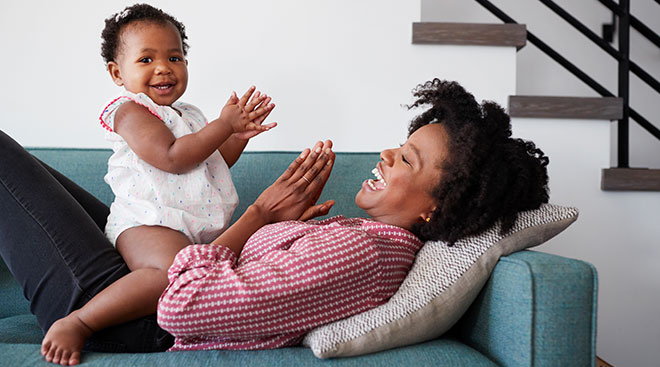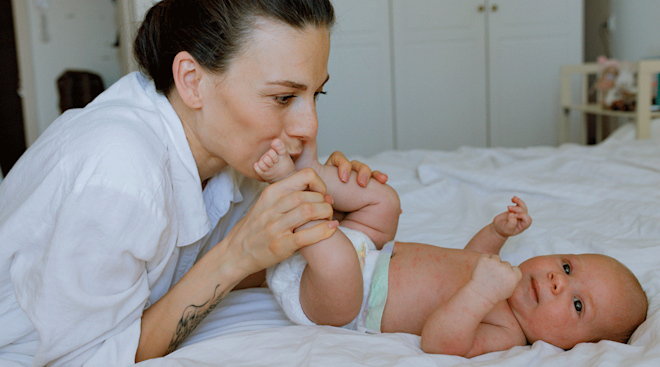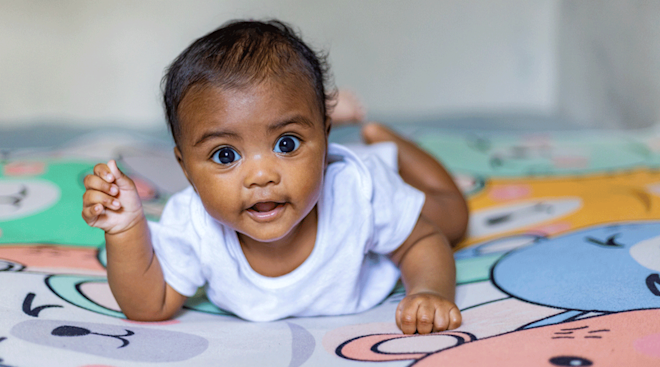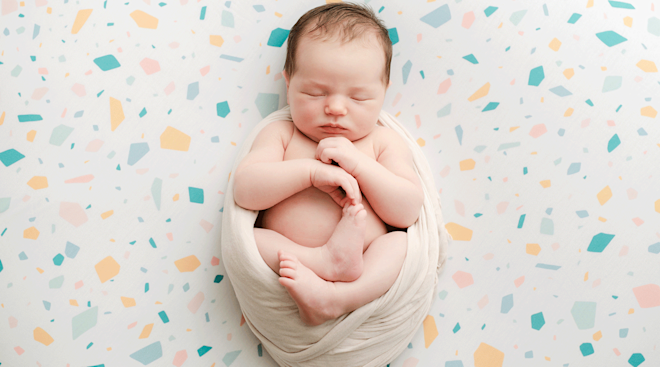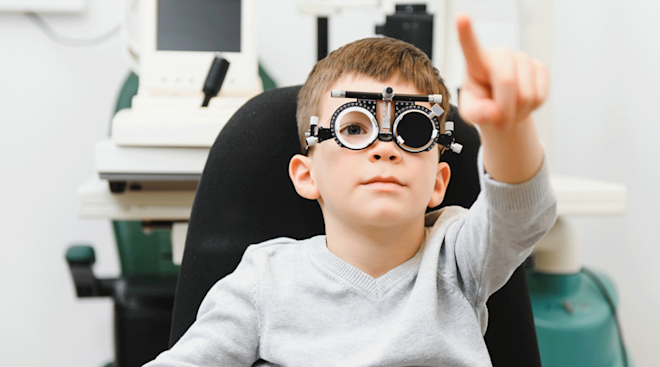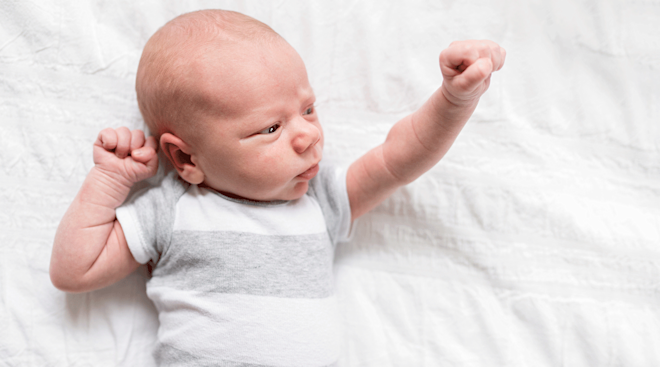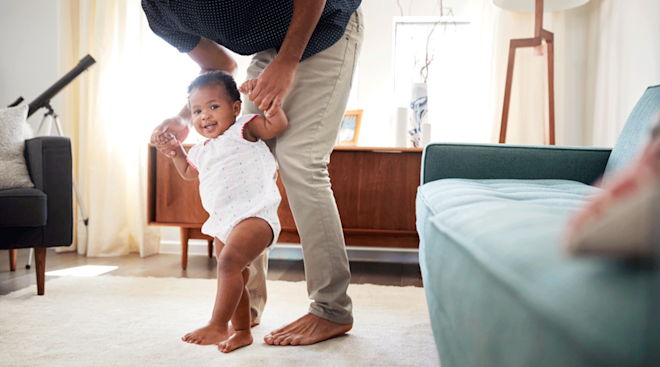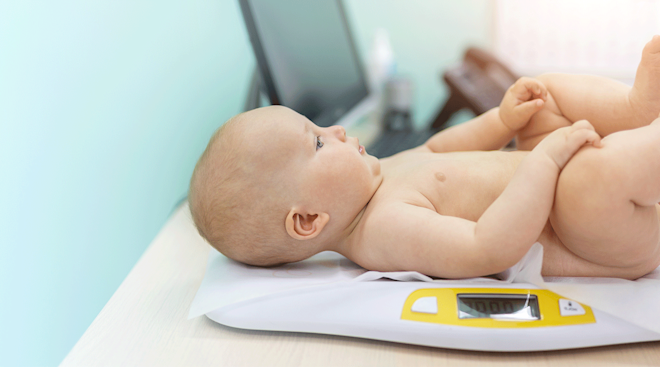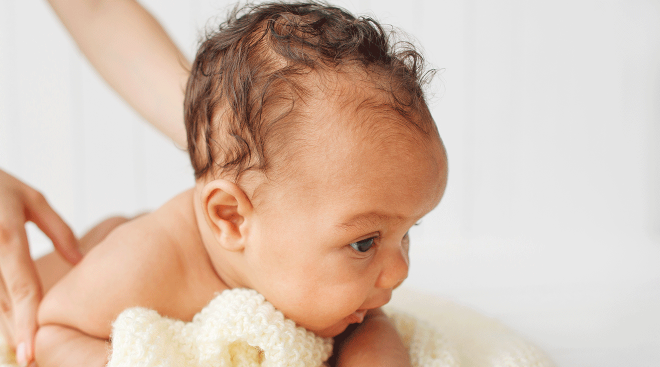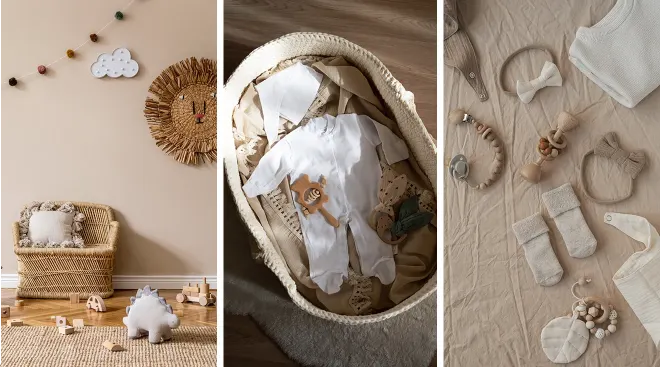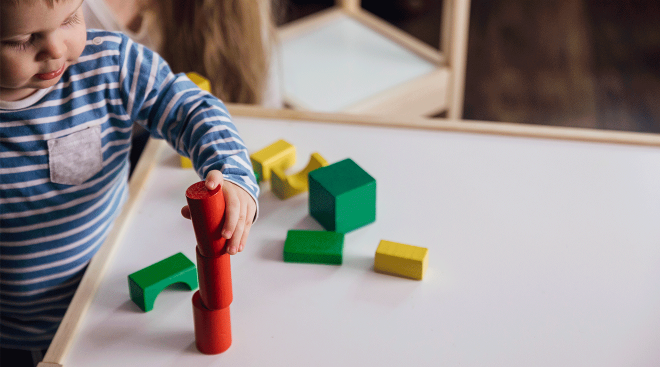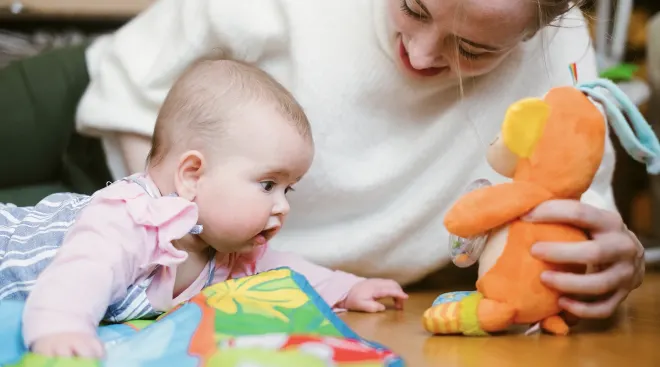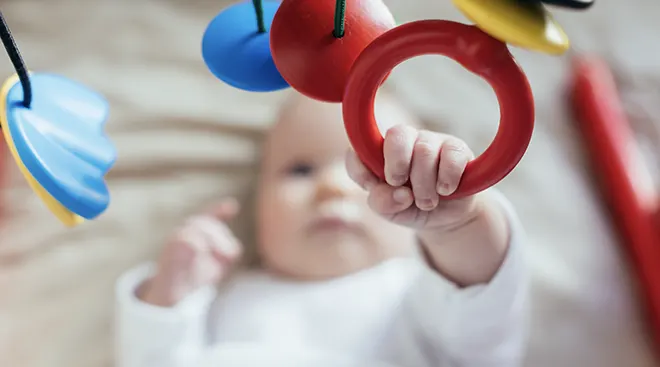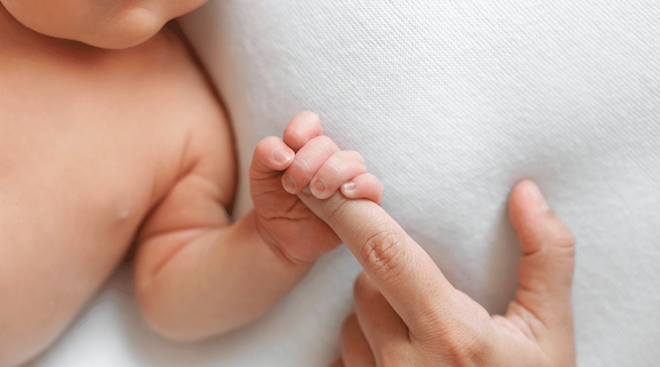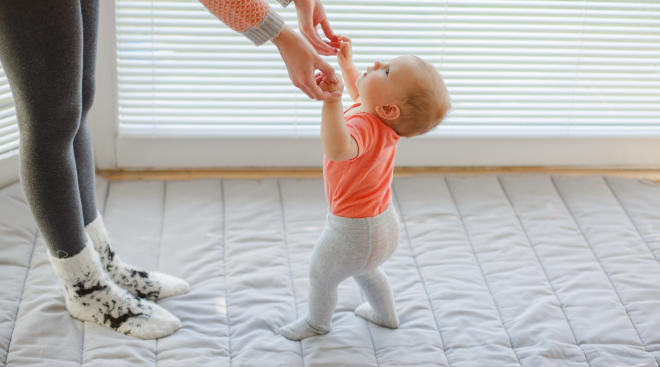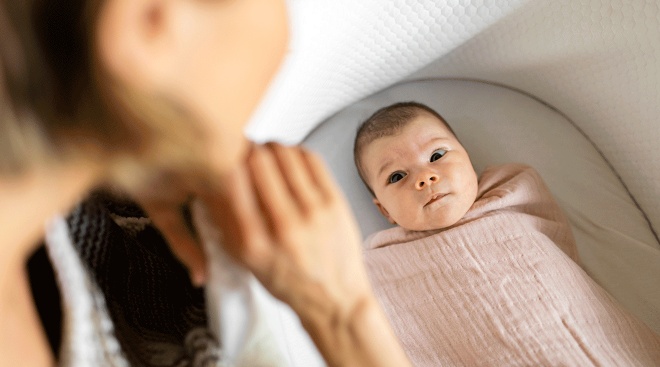When Do Babies Wave, Clap and Point?
Almost as soon as they’re born, baby begins to grow and learn and discover. And you’ll watch in absolute awe as that itty-bitty creature of yours finds their hands, uses their voice and cracks that first adorable smile.
While some important developmental milestones may go unnoticed, others are more obvious—and more exciting. It’s especially thrilling when your little one starts to interact with you in new and super-cute ways. Yes, communication and gesturing start long before baby can verbally express themselves. So when do babies wave, clap and point? And how can you help foster these skills? Here’s what you need to know.
We can promise one thing: Watching baby wave hello and goodbye to you will make you feel warm and fuzzy on the inside. So when can babies wave? According to the Centers for Disease Control and Prevention (CDC), your child should hit this milestone by the time they’re one year old. Many babies will start waving before their first birthday, “usually between 9 and 12 months,” says Catherine Wiley, MD, division chief of primary care at Connecticut Children’s Medical Center.
“Waving is a really neat intersection between social, language and fine motor skills,” says Danelle Fisher, MD, a pediatrician and the chair of pediatrics at Providence Saint John’s Health Center in Santa Monica, California. Waving can be a greeting or something baby does when they’re excited. “On the language side of things, they’re telling people what they want,” Fisher says. Either way, they’ll need fine motor skills to manipulate those little hands.
Want to encourage this adorableness? If you’re wondering how to help baby learn to wave, try modeling the behavior. “The easiest way to help your child learn to wave is to do it in front of [them],” says Adam Sawyer, MD, a pediatrician at Helen DeVos Children’s Hospital in Grand Rapids, Michigan. If baby doesn’t see it in action, they won’t know it’s an option.
Wave to baby when you first see them and when you leave the room. You can also make a point of waving to other people as a greeting when baby is around, Fisher says. This will help clue your cutie in on the intent of this action.
We get it: You’ve been patiently awaiting a well-deserved round of applause for your rousing rendition of Twinkle, Twinkle, Little Star. So when do babies start clapping? Babies usually begin banging two things together around 9 months of age, notes the CDC. Once they learn to do that, they’ll soon figure out that they can also smack their hands together, Fisher says.
Clapping involves balance and coordination, Wiley explains. “The first clap is usually just an activity without meaning,” she says. “But it eventually comes to mean that a child is happy or excited.” Enthusiastic clapping will probably happen around 15 months, according to the CDC. (And, in case you’re wondering: games of pat-a-cake will probably be on repeat about three months earlier.)
Encouraging your wee one to clap their clumsy paws together can be a multi-step process. First, “help them learn to grab an object and hold it,” Fisher says. “Then, they’ll learn to hold their hands together.” If you see baby banging two objects together, she recommends mimicking the activity, and then demonstrating how to clap your hands together too.
By 15 months, baby should be regularly and decisively pointing to ask for help or to get a specific object, according to the CDC. But the early process of pointing can start before that, Wiley says. Babies will often point to things with one finger between 9 and 12 months; before that, they may pat items they’re interested in, she says. “It takes coordination to isolate that one finger to have a traditional finger-point,” adds Wiley.
The gesture involves communication and fine motor skills, Fisher says. “Baby is trying to draw your attention to something,” she says. Use this opportunity to help further your child’s language skills by actually saying the object’s name.
Want to help your child get their needs met? This starts with figuring out how to help baby learn to point. Wiley recommends working on this skill with baby during playtime. “Reading books is particularly good for this,” she says. “You can point at pictures and name objects. Eventually, baby will start to point and want you to talk.”
Your child’s pediatrician should be asking about developmental milestones at your regular wellness visits. But if you’re not seeing fine motor skill progress, escalate the issue with your doctor. And don’t panic—kids can progress on slightly unique paths. As long as they’re learning and growing, it’s most likely fine. “The milestones are designed to have parents and pediatricians pay attention to these things. I’m not all that concerned if a child isn’t making one or two milestone markers at a certain age if the rest are good,” says Sawyer. However, if your child has missed several milestones or seems to have lost some skills, talk to your doctor. They can help guide you on next steps.
Baby will continue to learn new tricks every day. It’s a fun time for them—and for you! Try to enjoy it. Before you know it, your expressive sweetie will be heartily waving, excitedly clapping and eagerly pointing.
About the experts:
Danelle Fisher, MD, is a pediatrician and the chair of pediatrics at Providence Saint John’s Health Center in Santa Monica, California. She earned her medical degree from the Albert Einstein College of Medicine of Yeshiva University in New York.
Adam Sawyer, MD, is a pediatrician at Helen DeVos Children’s Hospital in Grand Rapids, Michigan. He earned his medical degree from Wayne State University in Detroit, Michigan.
Catherine Wiley, MD, is the division chief of primary care at Connecticut Children’s Medical Center. She earned her medical degree from Duke University School of Medicine in Durham, North Carolina.
Please note: The Bump and the materials and information it contains are not intended to, and do not constitute, medical or other health advice or diagnosis and should not be used as such. You should always consult with a qualified physician or health professional about your specific circumstances.
Plus, more from The Bump:
Danelle Fisher, MD, is a pediatrician and the chair of pediatrics at Providence Saint John’s Health Center in Santa Monica, California. She earned her medical degree from the Albert Einstein College of Medicine of Yeshiva University in New York.
Adam Sawyer, MD, is a pediatrician at Helen DeVos Children's Hospital in Grand Rapids, Michigan. He earned his medical degree from Wayne State University in Detroit, Michigan.
Catherine Wiley, MD, is the division chief of primary care at Connecticut Children's Medical Center. She earned her medical degree from Duke University School of Medicine in Durham, North Carolina.
Centers for Disease Control and Prevention, Important Milestones: Your Child By One Year (CDC), June 2023
Centers for Disease Control and Prevention, Important Milestones: Your Baby By Nine Months, June 2023
Centers for Disease Control and Prevention, Important Milestones: Your Baby By Fifteen Months, June 2023
Learn how we ensure the accuracy of our content through our editorial and medical review process.
Navigate forward to interact with the calendar and select a date. Press the question mark key to get the keyboard shortcuts for changing dates.
































